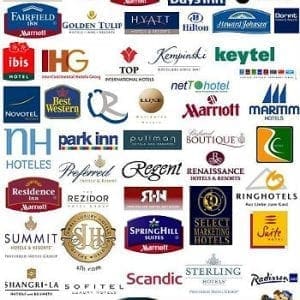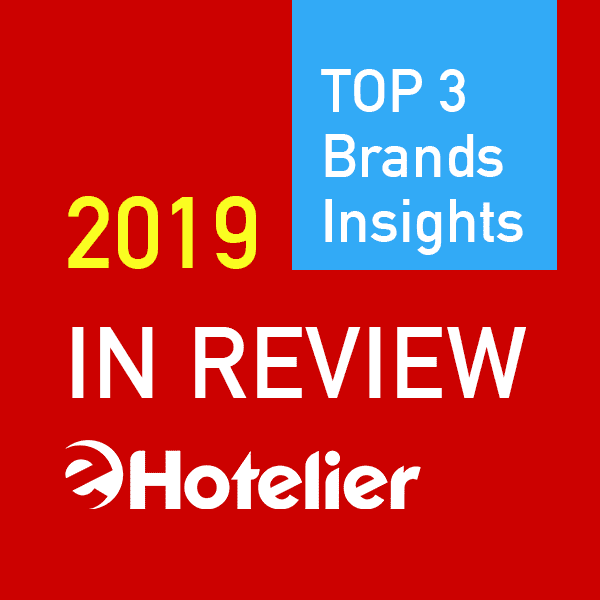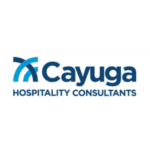 Marriott. Hilton. IHG. Wyndham. Choice. For years these chains have publicized the advantages of working with them: advanced loyalty programs that promise to bring consistent customers, low fees, tough negotiations with OTAs, and preferred financing options. Not so fast.
Marriott. Hilton. IHG. Wyndham. Choice. For years these chains have publicized the advantages of working with them: advanced loyalty programs that promise to bring consistent customers, low fees, tough negotiations with OTAs, and preferred financing options. Not so fast.
Are the brands’ claims actually true? While many owners have fallen victim to the claims of the brands, you need not do the same. As Mark Twain once said, “Whenever you find yourself on the side of the majority, it is time to pause and reflect.” Let’s take a closer look at what the brands are claiming, to make sure you know what to expect before entering into a 30-year binding agreement.
Brand loyalty discounts aren’t working
No doubt you’ve seen the advertising campaigns that the major brands are running to tout their loyalty programs, most aggressively over the last two years. Here’s how the loyalty programs work — to increase their member base, the brands advertise a discounted rate (typically 3% to 5% off their rack rates) for members. Enrolling as a member is easy; typically this involves just giving your email address. Once a customer becomes a member of a brand loyalty program, they get discounted rates and perks at properties across that brand’s portfolio. Sounds great, right? Here’s the problem, these drive-direct discounts aren’t working.
According to a recent BDRC study:1
- No long-term shift has occurred between direct bookings and OTA bookings since the end of 2015 when many brands launched their direct booking marketing campaigns.
- No long-term shift for either business travel bookings or leisure bookings, the main target of the brands’ marketing efforts.
- Of note, brand direct bookings for leisure travelers saw an initial boost after the brands launched loyalty rates, but the balance of OTA and direct bookings has since returned to the balance seen before the rates were rolled out.
- Possibly more surprising and counter to the claims of the big brands, BDRC’s study found that OTA customers are more likely to book upper scale tiers for leisure trips than non-OTA bookers.
- A recent study by J.D. Power supports BDRC’s findings.2
- J.D. Power found that customers surveyed between 2015 and 2018 were less likely to book direct and more likely to use OTAs.
Funding loyalty programs is expensive…for owners
Direct booking campaigns that reduce owners’ distribution costs are an advantage that hotel owners believe brands can and should provide. But, the aforementioned research details that these programs aren’t working. However, the brands don’t bear the full cost of their loyalty programs because it is the hotel owners who are paying for these expensive loyalty schemes.
For every reservation booked by a brand’s loyalty member, such as Marriott Rewards, that hotel pays a loyalty fee, typically around 5%. In addition, for every point earned on property, some brands charge owners a fee. These fees can add up quickly, but they aren’t the only costs owners have to pay. When loyalty members redeem their points with a free stay at a property, some brands will only pay out a nominal fee to cover costs – typically less than $100 – unless the property hits a high occupancy threshold such as 96%.3 Anything less than 96% and that owner’s ADR will take a major hit.
Hotels that scramble to hit the 96% occupancy threshold by dropping rates or by using other creative tactics will impact their revenue management strategy, not to mention their ADR, if they don’t hit the threshold. Think about it: airlines have teams of people making sure last-minute flight reservations are a pricey proposition, but companies like Hotel Tonight exist simply because of how often hotels need to shed last-minute inventory. This lose-lose situation is a stiff penalty for loyalty programs that BDRC’s data shows aren’t even working.
Brands charge fees on reservations they didn’t deliver
One of the fees that franchisees pay brands are royalty fees which typically run 5%-8% of gross room revenue. The intent of the royalty fee is to pay the brand for the use of its trade name, service marks, associated logos, goodwill and other franchise services. This makes sense for direct bookings – a customer appreciates something about a brand and chooses to book one of its properties online, by phone or via walk-in. But why do brands charge royalty fees for reservations booked on OTAs4?
Expedia once stated that “Of all the consumers searching Hotels.com, fewer than 0.5% are searching for specific large brands.” If the impact of the brands’ name and associated brand value was so important to a consumer, why would they choose to book on an OTA, and why would so few OTA consumers search for a specific brand name when using the site? While we will never know the true power of a brand’s name, the fact that OTA customers search for brands so infrequently calls into question why brands are charging owners royalty fees for OTA bookings.
If a 5% royalty fee seems harmless enough, consider this example: a 150-room major branded property operating at 75% occupancy, a $175 ADR and 11% annual OTA share, will pay a whopping $39,000 in annual royalty fees. We must ask – where is the brand providing value for this $39,000 fee?
Who’s really paying OTA commissions?
The major brands have made a lot of noise about OTA commissions over the years. In April 2018, Marriott’s CEO Arne Sorenson publicly stated that his goal in upcoming negotiations with Expedia was to “pay less.” But what do brand headquarters actually pay? The big brands only own a small fraction of their portfolio5; the vast majority of their properties are franchised or leased to owners. Through franchise and management agreements, all fees are passed onto owners, including OTA commissions.
And while OTA commissions have been steadily decreasing over the past few years, brand franchise fees are rising across the board. One study found that the Upscale segment’s franchise fees rose a staggering 81% from 2016 to 20176. It seems that OTA commission fees are the least of owners’ worries, and the rapidly diluting value proposition of operating a branded property is.
Simply put, brands cost more than you think
The long-held idea that brands are cheap is just not true. For years, brands have touted their low franchisee fees and how they are lower than OTA commissions. However, franchisee fees are only one piece of the revenue that brands collect from owners. Most brands charge Loyalty Fees and Performance Marketing Fees and require Loyalty Discounts, and these additional fees leave owners paying sometimes more than they would have paid to OTAs alone.
An interesting article has surfaced a new concept that helps calculate the additional fees that come from brands “double charging” on OTA bookings – Brand Contribution Penalty (BCP)7. Essentially, this theory states that the less contribution a brand produces, the higher its Brand Contribution Penalty is because that property will have to use OTAs to fill more of its rooms – thus incurring the “double charge” penalty. As the article mentions, a brand’s BCP can add up to a 20% fee! Adding the Brand Contribution Penalty to all the other fees owners must pay is a hard pill to swallow.
So, why are so many hotel projects branded?
A common hotel industry perception is that it’s much easier to finance a branded hotel purchase than a non-branded purchase. While there may be some merit to this belief, owners may still have an opportunity to avoid going with a big brand when financing their property and thus avoid all the hassles mentioned above.
If you’re considering going without a brand, here are some tips to remember.
First, consider what OTAs can do for you. If you drop your brand flag, you will have to find another way to market your property and message your value to customers. Enter OTAs. Online Travel Agencies like Hotels.com, Booking.com and Expedia do not charge up-front costs for marketing and, instead, only charge a commission percentage. Bundled in this commission is the marketing power that OTAs provide, exposing your property to millions of customers who are mostly brand agnostic. Strong sort placement on OTA sites as well as lots of positive reviews can counteract the lost marketing from dropping your brand flag.
Second, consider that lending organizations may be more inclined to fund a hotel with cash flow. If you can prove “concept success” for a hotel – that it serves a need in the market – you may have an easier time securing financing for the purchase.
Third, owners looking to finance a non-branded hotel project should do their due diligence before looking for financing. Can the market support a new hotel of this size, ADR, and star tier? Which types of demand will the property attract? Which properties will be its major competitors and what competitive advantages does the property offer? If your concept satisfies a strong need, your lending organization may be more inclined to fund.
With a booming economy and increased competition across the globe, owners must examine their partnerships to ensure they position themselves to be financially successful. It’s no longer necessary to work with a brand to achieve financial success in your hotel. Remember to lean on OTAs and to consider what lending organizations are looking for in financing agreements, and you can avoid pain points that the big brands bring.



















